02:48
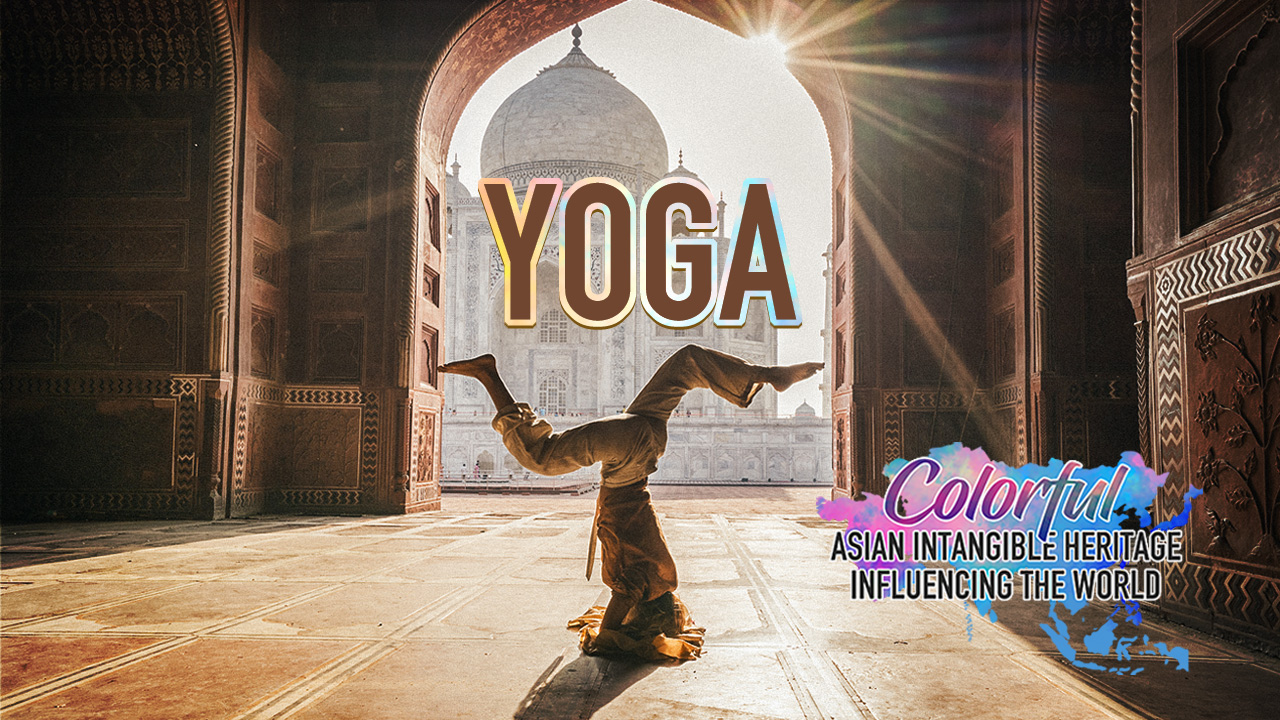
When it comes to yoga, what's your first impression? Various difficult poses, controlled breathing, or meditation?
In the eyes of many, yoga is a form of self-cultivation, as practitioners look to achieve physical and mental unity.
But that is just one small aspect of yoga. Originating from ancient India, yoga was one of six schools of Hindu philosophical traditions, aiming to unite the human spirit with "the divine".
A history of yoga as a philosophy
Archaeological findings show that yoga may have been practiced 5,000 years ago. The Pashupati Seal, discovered at a site dating back to the Indus Valley Civilization, depicts a figure in a meditation pose.
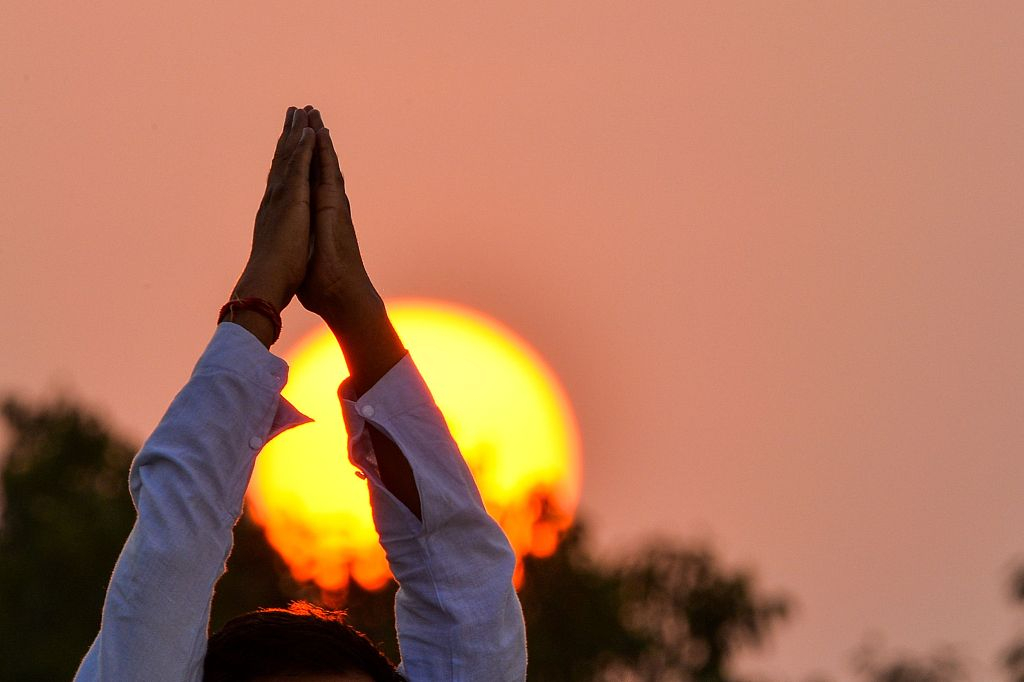
A yoga practitioner participates in a rehearsal for International Yoga Day in New Delhi, India, June 19, 2016. /VCG Photo
A yoga practitioner participates in a rehearsal for International Yoga Day in New Delhi, India, June 19, 2016. /VCG Photo
The word yoga was first mentioned in "Rigveda" (1700–1100 BC), one of the four sacred canonical texts of Hinduism. Deriving from Sanskrit, the word originally means "to attach, join, harness, yoke."
Yoga practices were first referred to in writing in the Hindu Upanishads (800-500 BC), and extensive teachings of yoga emerged several centuries later in the texts of "Bhagavad Gita," which introduced three prominent types of yoga: Karma yoga (the yoga of action), Bhakti yoga (the yoga of devotion), and Jnana yoga (the yoga of knowledge).
Around 400 BC, Indian sage Patanjali compiled the "Yoga Sutras," which laid the foundations of yoga theory and practice, including the famous Ashtanga yoga.
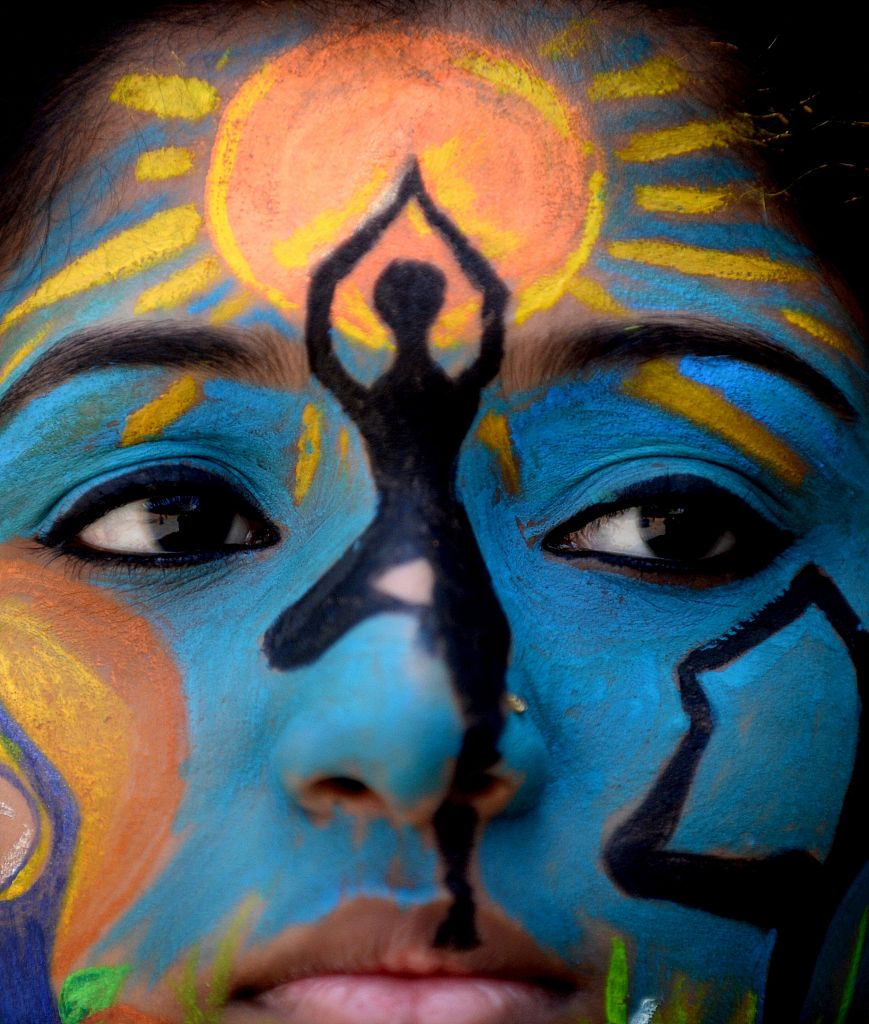
An Indian college student poses for a picture with a yoga pose painted on her face in Chennai, India, June 20, 2018, on the eve of International Yoga Day. /VCG Photo
An Indian college student poses for a picture with a yoga pose painted on her face in Chennai, India, June 20, 2018, on the eve of International Yoga Day. /VCG Photo
More yoga traditions, such as Hatha yoga, developed in the Middle Ages (500-1500 AD) .
Hatha yoga, combing elements of "Yoga Sutras" with poses and breathing exercises, gradually became what we know as yoga today.
Popularization of yoga
Modern yoga emerged in the 20th century by blending Western styles of gymnastics with poses from Hatha yoga. Featuring full-body asanas and meditation, it helps practitioners gain fitness, relaxation, and reach inner joy and spiritual relief.
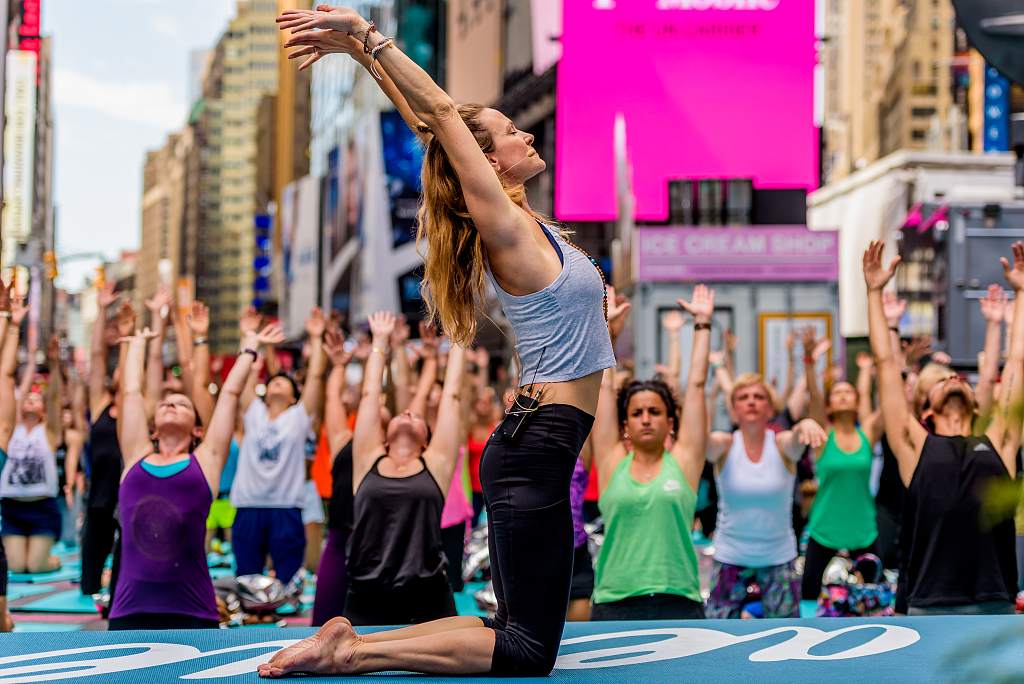
People take part in the 15th Annual Solstice at Times Square in New York City, U.S., June 21, 2017. /VCG Photo
People take part in the 15th Annual Solstice at Times Square in New York City, U.S., June 21, 2017. /VCG Photo
As yoga grew more and more popular, several yoga masters pushed modern yoga to achieve international influence, including Swami Vivekananda, B.K.S Iyengar and Swami Ramdev.
Even some celebrities unintentionally helped to popularize yoga. The Beatles and Apple founder Steve Jobs visited India in the 1960s, stimulating interest in the power of yoga.
As yoga spread from east to west, millions of people across the world began to learn it. A 2016 study conducted by Yoga Journal and Yoga Alliance indicates that in the U.S. alone 36.7 million people practice yoga.
The modern yoga industry
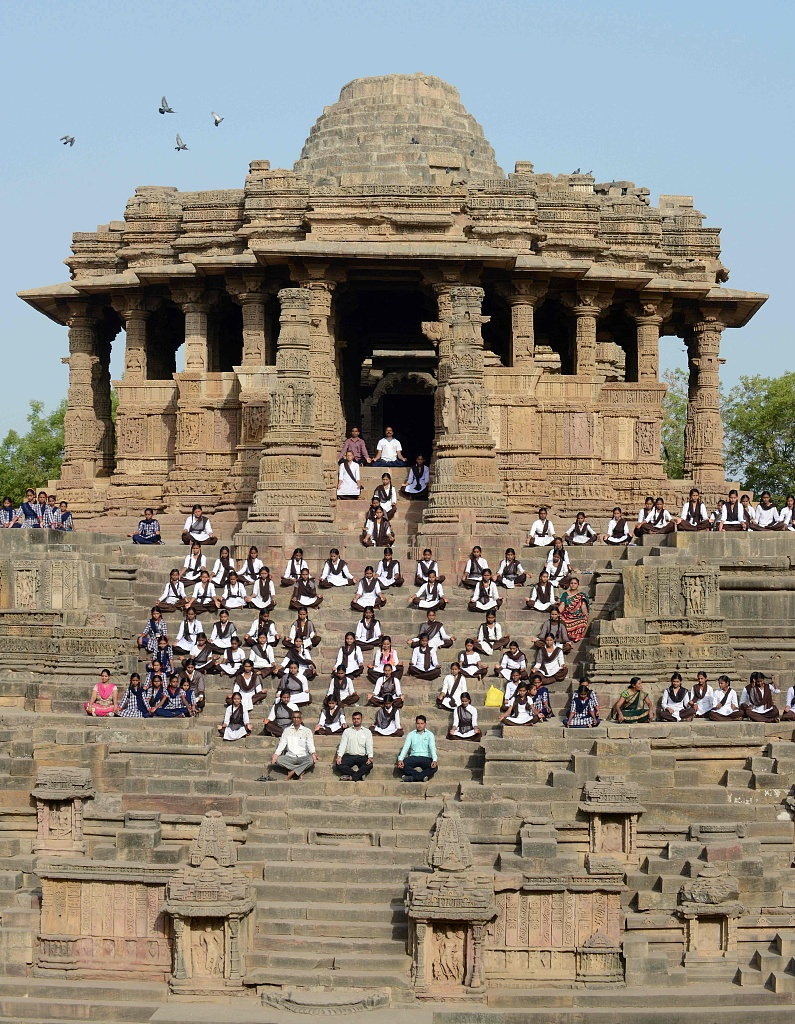
Indian school students take part in a yoga session to mark International Yoga Day in Modhera, Gujarat state, India, June 21, 2018. /VCG Photo
Indian school students take part in a yoga session to mark International Yoga Day in Modhera, Gujarat state, India, June 21, 2018. /VCG Photo
The yoga industry in India has developed rapidly in recent years. For example, many elementary schools offer yoga classes from the first grade.
Yoga also has developed into a global multi-billion dollar business.
Rishikesh in northern India, an ancient sacred Hindu site, now has many yoga centers attracting people from around the world, earning it the nickname "Yoga Capital of the World."
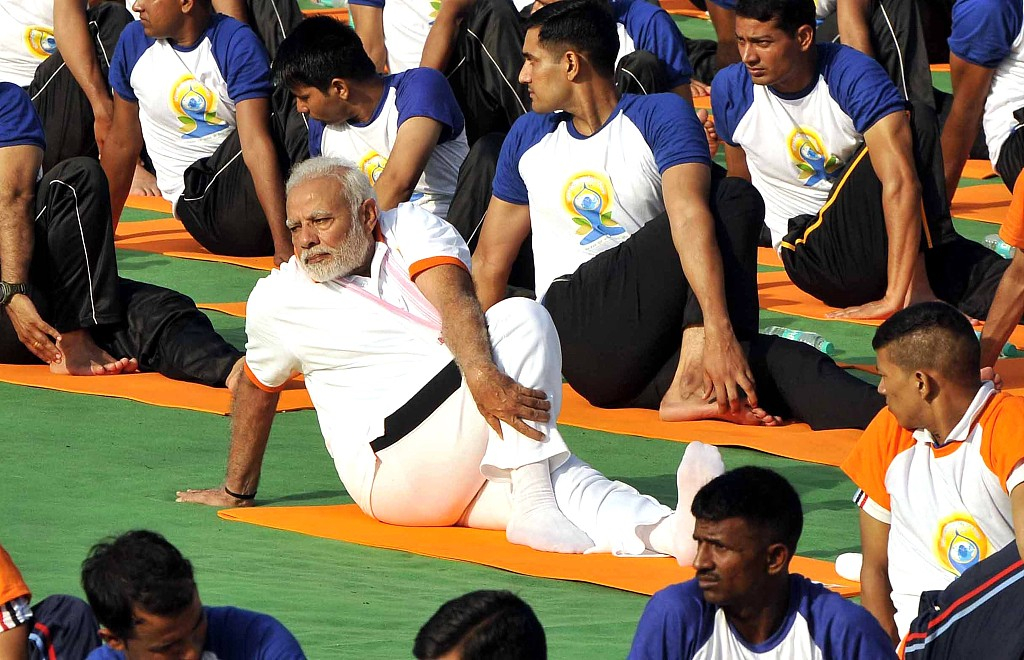
Indian Prime Minister Narendra Modi participates in a mass yoga session along with other practitioners to mark International Yoga Day at the Forest Research Institute (FRI) in Dehradun, Uttarakhand, India, June 21, 2018. /VCG Photo
Indian Prime Minister Narendra Modi participates in a mass yoga session along with other practitioners to mark International Yoga Day at the Forest Research Institute (FRI) in Dehradun, Uttarakhand, India, June 21, 2018. /VCG Photo
In 2014, Narendra Modi, Indian Prime Minister and yoga practitioner, launched the "Made in India" program, with the aim of making yoga a part of the "health industry."
In the same year, the United Nations proclaimed June 21 as the International Day of Yoga, under Modi's proposal.
On December 1, 2016, Indian Yoga was inscribed into the intangible cultural heritage list by UNESCO.
Video Editor: Ding Zhiyang
Designer: Fan Chenxiao
Animation and special effect: Pan Yufei
Producer: Wen Yaru
Chief Editor: Lin Dongwei
Supervisor: Pang Xinhua







